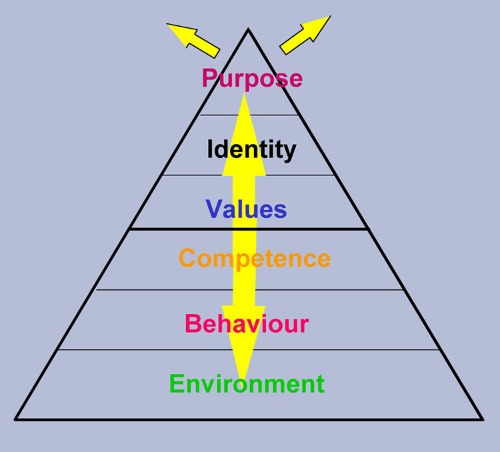Dilts Logical Levels of Change
This very effective model developed by Robert Dilts enables us rapidly to analyse an organisation and provides a simple basis for discussing the major aspects of its current situation and desired future, and thus identifying suitable interventions.
It can be applied to companies, divisions, departments, teams and individuals and used to discuss relationships between departments and with external stakeholders.
Individuals and organisations are analysed by the six levels of: environment, behaviour, competence, values, identity and purpose.
In addition to reviewing the organisation in terms of each level we also take care to consider the relationship between the levels in order to ensure that the whole organisation is congruent and in harmony with itself.
It can be used for collecting information and deciding the most effective place for an intervention to achieve change, for reviewing or designing a new culture, or for preparing a specification – e.g. a job description or mission statement.
In a workshop environment it helps identify issues that can then be discussed and resolved with a shared ownership, leading to increased co-operation and motivation.

The vertical arrow signifies that the first check is that the individual or organisation is congruent though all the levels. Incongruence is likely to lead to stress or reduced performance.
The shape of the diagram is significant. Change can be achieved by making changes at any level. However, it is likely to require significantly more effort or investment at the environment level – and a charismatic leader could transform an organisation ‘simply’ by inspiring individuals and teams with a new purpose.
This model is particularly useful in ensuring a strong relationship between the top three levels of purpose, identity and values, and the more practical levels below.
Each level higher is progressively more psychologically encompassing and impactful.
It is probably more suitable to start at the bottom when analysing an individual or organisation and at the top when building a model based on an agreed purpose.



